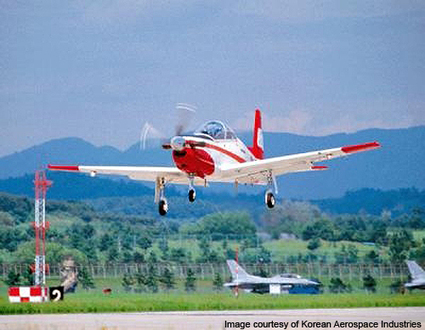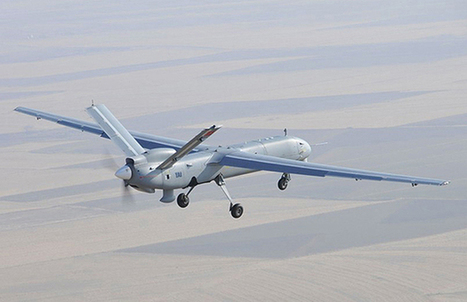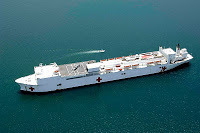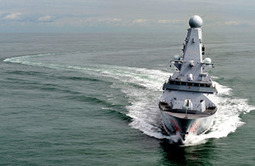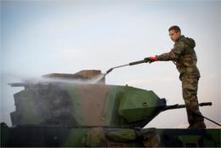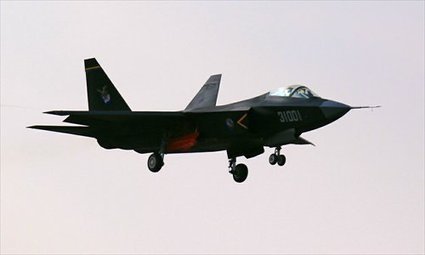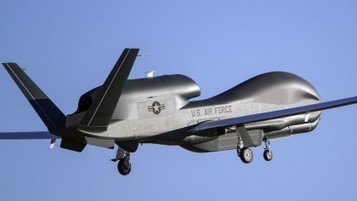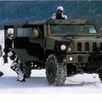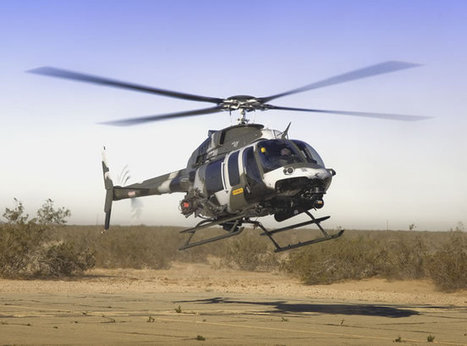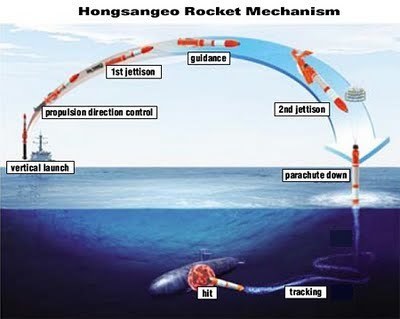 Your new post is loading...
 Your new post is loading...

|
Scooped by
Romain
March 7, 2013 5:25 AM
|
Korea Aerospace Industries (KAI) has awarded a contract to CMC Electronics to deliver its integrated glass cockpit for installation in the Peruvian Air Force's KT-1P turboprop trainer aircraft. As part of the contract, the company will develop and supply an undisclosed number of Cockpit 4000 avionics systems for integration in 20 Peruvian KT-1P trainers. The trainers are currently being manufactured by KAI, as part of a $200m contract received in November 2012.

|
Scooped by
Romain
March 7, 2013 5:16 AM
|
Dans un à deux mois, la production en série du drone turc Anka débutera dans le cadre d’un contrat entre Turkish Aerospace Industries (TAI) et le Haut-secrétariat de l’industrie de la défense nationale. L’Anka est la première plateforme d’avion sans pilote turc de conception nationale. Jusqu’à présent, l’armée turc opérait des drones Heron de fabrication israélienne et exploitait les données fournies par les drones américains MQ-1 Predator survolant le nord de l’Irak pour sa lutte contre le PKK. Les tests d’acceptation finale du drone Anka se sont achevés le 20 janvier 2013. Ils comprenaient un vol d’essai de plus de 18 heures en continu à 200 km/h sous des vents atteignant 45 nœuds, avec décollages et atterrissages automatiques de nuit. Murad Bayar, sous-secrétaire à l’Industrie de la Défense. Certaines fonctions de l’engin vont être développées d’après le sous-secrétaire de l’Industrie de la Défense, Murad Sous Bayar. La prochaine étape est la production en série de 10 drones Anka pour l’armée de l’air turque. « Des négociations sont déjà en cours », a ajouté le sous-secrétaire. « Ce système possède un design plus évolutif et plus de fonctionnalités », a t-il déclaré, précisant que le système Anka est déjà un drone couronné de succès depuis sa mise en service en juin 2012. La Turquie a également entamé des négociations pour la vente de drones Anka, ainsi que des systèmes de fusées CIRIT, des hélicoptères T-129 Atak et des chars Altay, a commenté Mr Bayar. L’objectif est de stimuler les exportations d’armes turques vers les pays du Golfe. Le fabricant de missiles Roketsan a déjà signé un contrat d’exportation de son système de fusée à guidage laser CIRIT aux Emirats Arabes Unis pour un montant total de 196,2 millions de dollars.

|
Scooped by
Romain
March 7, 2013 5:07 AM
|
The chief designer of the Shenyang J-15 fighter has compared the aircraft to the BoeingF/A-18 Hornet, and suggests that the developmental J-31 could one day serve aboard Chinese aircraft carriers. In an interview with Chinese state news agency Xinhua, Chinese aircraft designer Sun Cong said that the J-15 is "generally close to the US F/A-18, reaching world class standards". He adds that the J-15 could have a combat radius of over 1,000km (540nm) if powered by domestic engines. This comment could corroborate reports that the J-15s conducting flight tests aboard the aircraft carrier Liaoning are powered by Russia's Saturn AL-31F, and not the domestically produced Shenyang WS-10A. For its part, in December 2012, the defence ministry said the J-15 is powered by the WS-10A. Industry observers, however, are dubious about this claim owing to Beijing's well-known struggles with jet engine technology. In the interview, an abstract of which was published on China's defence ministry website, he said that developing the J-15 presented special challenges. Aside from a requirement to have equal "combat capability" to land-based aircraft, naval fighters must also have exceptional low speed performance for landing on a carrier deck. In the version of the interview published on the People's Daily website, Sun said that he hoped the J-31 would become China's next carrier-borne fighter. This section of the interview was excluded from the version on the defence ministry's website. Beijing's plans for the J-31 is unclear. It is uncertain whether it is designed as a competitor or complimentary type to the larger Chengdu J-20. A model resembling the J-31 was also shown in the AVIC hall during Airshow China in Zhuhai in November, which could suggest that Beijing seeks a foreign partner in the programme.

|
Scooped by
Romain
March 7, 2013 5:06 AM
|
The Changhe Aircraft WZ-10 attack helicopter is based on a Russian design commissioned by the Chinese, Kamov's chief design engineer says. In 1995, Kamov developed a preliminary design in the 6t weight class under a contract with the Chinese government, says Sergey Mikheev, Kamov's chief design engineer, speaking at the Heli-Expo trade show in Las Vegas, Nevada. "Due to understandable reasons, this information was kept secret," he says. Dave Majumdar/Flightglobal The Project 941 design was not based on any Soviet-era attack helicopter project and was strictly designed for China's unique requirements, Mikheev says. "They gave us the desired weight, we discussed preliminary performance parameters, then we signed a contract and we fulfilled the contract," he says. After Kamov completed the design, the Russian design bureau verified the design via testing. Kamov then delivered the design to China and the Project 941 concept was accepted by that country's government for further development, he says. Kamov did not participate in any further developmental work on the WZ-10, he insists. Thereafter, to the country's credit, Mikheev says, the Chinese handled the rest of the developmental work. That includes the developmental prototypes and the operational aircraft that is currently in production for the Chinese military. "So I wish success to the helicopter," Mikheev says. Mikheev would not comment on the WZ-10's performance. "That is a question for the Chinese," he says. "I know what I have done."

|
Scooped by
Romain
March 7, 2013 4:21 AM
|
Moscou et Hanoï envisagent de signer en 2013 un accord réglementant l'entrée des navires militaires russes dans les ports vietnamiens, a déclaré mercredi le ministre russe des Affaires étrangères Sergueï Choïgou à l'issue d'un entretien avec son homologue vietnamien Phung Quang Thanh. En visite à Hanoï, le chef du département militaire russe a qualifié d'extrêmement importante "l'entente sur (…) la signature au cours de cette année d'un accord mutuellement avantageux et relatif à l'entrée et à l'appui logistique des navires militaires russes dans les ports vietnamiens". Jusqu'au milieu des années 2000, le port vietnamien de Kamran a hébergé un point d'appui logistique naval russe.

|
Scooped by
Romain
March 7, 2013 4:16 AM
|
Le prochain drone MALE de l'armée de l'air, qui doit remplacer le Harfang, ne sera pas armé. Cette décision politique a été prise par le ministère de la défense, alors que des lettres viennent d'être envoyées à deux industriels, l'américain General Atomics, constructeur du Reaper et l'israélien IAI pour le Heron (voir notre post précédent ), en vue d'un achat sur étagères. Ce drone sera donc uniquement un système d'observation optique et de capteurs électromagnétiques. Il ne sera pas armé pour détruire des objectifs qu'il aurait repéré, comme le sont les engins américains.
Cette décision s'explique à la fois par le souci de ménager certaines susceptibilités politiques, alors que les critiques se multiplient à l'encontre des frappes conduites par l'administration Obama... pourtant prix Nobel de la Paix ! Une autre raison, plus prosaïque, pourrait également expliquer ce choix. Il n'est pas certain que les Américains (c'est l'option préférée des militaires) acceptent vraiment de vendre des drones armés, sans en garder un certain contrôle. Par exemple, en les pilotant depuis des bases américaines....
Si la décision d'acquérir de tels systèmes, pour un cout total d'environ 250 millions, est prise, la date reste incertaine et le délai avant qu'ils ne soient opérationnels se mesure en années, pas en mois...
En attendant, le contrat de maintenance du Harfang avec Cassidian (EDAS) qui arrivait à son terme cette année a été prolongé de deux ans. Deux Harfang (sur les quatre de l'armée de l'air) sont actuellement déployés à Niamey (Niger) pour des missions au dessus du Mali.

|
Scooped by
Romain
March 7, 2013 4:15 AM
|
Le Vietnam continuera d'acheter des armes en Russie, a déclaré mercredi le ministre vietnamien de la Défense Phùng Quang Thanh, à l'issue d'entretiens avec son homologue russe Sergueï Choïgou, en visite à Hanoi. "Nous avons examiné les questions liées à la formation des militaires vietnamiens en Russie et à la coopération militaire et technique. Le Vietnam collabore activement avec la Russie dans ce domaine et il continuera d'acheter des armements et des matériels de guerre russes", a indiqué le ministre. Les entretiens russo-vietnamiens ont également porté sur l'élargissement de la coopération entre les forces armées des deux pays. Le ministre a en outre déclaré que le Vietnam soutenait la Russie dans le cadre de la conférence des ministres de la Défense des pays membres de l'Association des nations de l'Asie du Sud-Est (ASEAN).

|
Rescooped by
Romain
from Newsletter navale
March 7, 2013 4:14 AM
|
NORFOLK -- Because of sequestration budget cuts, Navy frigates will stop conducting drug patrols in the Caribbean and along the South American coastline, ending their participation in a joint operation that stopped 160 tons of cocaine from reaching U.S. streets last year. The Navy confirmed Tuesday that it is suspending the upcoming deployments of two ships to the region, the Norfolk-based Kauffman and the San Diego-based Rentz. They were scheduled to replace two San Diego-based frigates that will return home in the coming weeks -- one of them early because of the cuts. The ships were part of Operation Martillo, a counternarcotics effort that involves the Navy, Air Force, Coast Guard, Marines, Drug Enforcement Agency and law enforcement agencies from several partner countries in Latin America and Europe. Officials acknowledge that, without the frigates, fighting drug trafficking in the Caribbean just got tougher. "We are always looking for creative ways to address this problem," said Lt. Cmdr. Ron Flanders, spokesman for the Southern Command, which is responsible for the task force that works with partner countries to run Operation Martillo. "Certainly with less gray hulls it will be more challenging," he said, referring to Navy ships. Last year, Operation Martillo ("martillo" means hammer in Spanish) intercepted and captured $4 billion worth of cocaine, valued at $12 billion in street resale value; 25,000 pounds of marijuana, worth more than $10 million on the streets; and $3.5 million in cash, according to U.S. Southern Command. The across-the-board budget slashes took effect Friday, coming down hard on defense and forcing the services to cut operations not considered essential. With the Afghanistan war effort still a priority and the Navy's pivot to the Pacific region, commanders have warned that police and goodwill operations in South and Central America would be on the sequestration chopping block. Operation Martillo is not the only naval operation in the Caribbean hit by sequestration. The hospital ship Comfort was supposed to leave its new base in Norfolk early next month for a four-month humanitarian mission to eight South and Central American nations. That, too, was cut. The Coast Guard says it will reduce hours dedicated to drug interdiction and its other operations.... ...Coast Guard Commandant Adm. Robert Papp noted that Great Britain, Holland and France each provided a ship to the Caribbean but are withdrawing those because of their own budgetary problems.
Via Patrick H.

|
Rescooped by
Romain
from Newsletter navale
March 7, 2013 4:12 AM
|
The potential for Type 45 destroyers to help protect deployed UK and Allied forces from threat of ballistic missiles is to be investigated. Building on its relationship with the US Missile Defense Agency (MDA), the joint Ministry of Defence and industry-run UK Missile Defence Centre (MDC) has agreed to take part in a trial which will include, for the first time, a Royal Navy Type 45 taking part in a major research and development programme. This will include testing the Sampson radar, part of the Sea Viper missile system, in detecting and tracking ballistic targets. While there is no programme to fit Type 45 with Theatre Ballistic Missile Defence (TBMD) capability, much of the MDC’s research over recent years has been geared towards understanding potential the Royal Navy’s newest destroyers may have in this arena. Simon Pavitt, Head of the MDC, remarked on the new research and development approach: It will be a step change to be able to work so closely with such a ship in an emerging area of Defence. Working with an operational platform will make a significant difference to our level of understanding and could contribute both financially and technically towards any future programme. The MDA regularly conducts similar trials to test and verify the US military’s BMD systems. Including a Type 45 in one of these events for the first time, allows the two allies to closely cooperate with each other. HMS Daring, the first of the Type 45 Class, is no stranger to operating with the US Navy, having completed several training exercises in both US and UK waters. HMS Daring’s recent deployment to the Gulf included several joint operational missions. The UK Missile Defence Centre was established in 2003 following signature of a Memorandum of Understanding between the UK and US on how to jointly conduct ballistic defence studies. By establishing a joint industry and MOD centre the UK government can best meet the UK’s long-term policy and research requirements.
Via Patrick H.

|
Scooped by
Romain
March 7, 2013 3:58 AM
|
Dans le cadre du désengagement des forces françaises d'Afghanistan, un détachement de six militaires du 2e régiment de dragons de Fontevraud a été projeté à Kaboul. Spécialisés dans la décontamination de véhicules et dotés de 2 VLRA (Véhicule de Liaison de Reconnaissance et d’Appui), ce petit groupe opère en appui du bataillon logistique pour le lavage et le traitement des matériels rentrant en métropole. Ces deux VLRA utilisent de faibles quantités d’eau et permettent d’utiliser des lances « haute pression » ou des lances « vapeur » à 180°C. Lorsque le premier VLRA a assaini le matériel, le deuxième pulvérise une eau traitée pour désinfecter les véhicules et containers (photo Sirpa Terre). Présent sur le théâtre afghan depuis septembre 2012, le 2e régiment de dragons a donc pour mission de traiter au niveau phytosanitaire les véhicules militaires quittant l’Afghanistan. Au terme de 6 mois de mission, la première rotation est rentrée fin janvier pour laisser place à une nouvelle équipe de dragons, désinfectant une quinzaine de véhicules par jour. C’est la première sortie en opération extérieure de ces moyens, habituellement destinés au traitement NBC.

|
Scooped by
Romain
March 7, 2013 3:53 AM
|

|
Rescooped by
Romain
from Newsletter navale
March 6, 2013 6:23 AM
|
China’s second stealth fighter, dubbed J-31, makes its maiden flight Wednesday in Shenyang, Liaoning Province. Photo: Pan Bin Sun Cong, chief designer of the J-15 carrier-borne fighter jet and a member of the National Committee of the Chinese People's Political Consultative Conference, accepted a special interview with Xinhua News Agency on March 2. The J-15, nicknamed "lying shark", is China's first generation of carrier-borne fighter jet. When the piloted J-15 fighter landed on the Liaoning aircraft carrier for the first time and successfully took off, Sun was filled with excitement. J-15 carrier-borne fighter jet has filled the technological gap in the related fields. Compared with land-based aircraft, the carrier-borne aircraft raised more and higher requirements in technological aspects. Sun said the carrier-borne fighters must have the same combat capability as the land-based fighters in terms of bomb load, combat radius, and maneuverability; it must have good low-speed performance. It also raised higher requirements in terms of blocking landing in the sea and ski-jump takeoff. "The engine is the key. If we can halve the fuel consumption, the combat radius will increase." Sun said that a J-15 equipped with domestic engines can have a combat radius of more than 1,000 kilometers. Considerable progresses have been made in fire control radar and guided missiles. "The indicators of J-15 are generally close to US F/A- 18 Hornet , reaching world-class standards." To make sure the aircraft slides at a relative velocity of about 60 meters per second in a fixed and constant posture on the glide slope and land precisely on the fight deck, many key technological difficulties including the operation methods of the pilot, the technical design characteristics, and other aspects need to be overcome. Sun is also the chief designer of the J-31. He hopes the J-31 can pair up with J-20 in the future in tasks of both high and low altitudes, to maintain continuing striking capability. He also hopes the improved version of J-31 can become China's next-generation carrier-borne fighter jet. At present, Sun and his team are exploring key technologies of the next generation of fighter planes, and "will make breakthroughs in terms of whole time-domain, whole airspace, and greater combat radius".
Via Patrick H.

|
Scooped by
Romain
March 6, 2013 5:45 AM
|
AgustaWestland today unveiled its ‘Project Zero’, an electrically-powered tilt rotor technology demonstrator, giving an insight into what advanced rotorcraft of the future may look like. The company funded technology demonstrator was designed and built in less than 6 months and has already secretly flown several times in 2011 and 2012. An electric powered vehicle, ‘Project Zero’ can hover like a helicopter and convert to a fixed wing aircraft in forward flight thanks to its two integrated rotors, which can be tilted through more than 90 degrees. The demonstrator performed its first unmanned tethered flight in June 2011 at AgustaWestland’s Cascina Costa facility in Italy and has since performed untethered hovering flights inside a secured area. Daniele Romiti, AgustaWestland’s CEO, said “The ‘Project Zero’ technology demonstrator program brings together many of the advanced technologies AgustaWestland has been researching in recent years and demonstrates our strong technological base from which we will develop new products to meet the needs of our customers in the future. We strongly believe in the tilt rotor concept as the future of high speed rotorcraft flight as it offers much greater speed and range than compound helicopter technology.” The demonstrator’s rotors are driven by advanced electric motors powered by rechargeable batteries; future hybrid solutions have also been investigated using a diesel engine to drive a generator. All of the aircraft control systems, flight control and landing gear actuators are electrically powered, removing the need for any hydraulic system. During cruise, the wings will provide most of the lift, with the blended fuselage and shroud also making a contribution. ‘Project Zero’ has been designed with detachable outer wings for missions that will be performed primarily in helicopter mode. Elevons provide pitch and roll control in forward flight while the V-tail provides longitudinal stability. The aircraft has very low noise and thermal signature in flight and does not require oxygen, thereby permitting it to fly at altitude or in heavily polluted conditions, such as volcanic eruptions. When parked on the ground the rotors can be tilted forward, with the the aircraft pointed into wind, to allow the rotors to windmill and recharge the aircraft’s electrical storage device. The electrical drive system also has the advantage that it does away with the complex and heavy transmission system required by conventional rotorcraft.
|

|
Scooped by
Romain
March 7, 2013 5:25 AM
|
UTC Aerospace Systems, a joint venture between Goodrich and Hamilton Sundstrand, has received a contract to deliver advanced Dual Band-110 (DB-110) airborne reconnaissance systems for integration into the Turkish Air Force's F-16 Fighting Falcon aircraft. Awarded by Aselsan Elektronic Sanayi ve Ticaret, the contract is part of the Turkish Airborne Reconnaissance Program (TARP). Under the contract, the company will provide four DB-110 reconnaissance pods, along with three fixed / transportable imagery exploitation systems, as well as training and logistical support services to the air force.

|
Scooped by
Romain
March 7, 2013 5:11 AM
|
The US Army has opened discussions with American Eurocopter to introduce a B-model of the UH-72A Lakota in 2017. “The army every 10 years looks at how to improve and enhance and modernise its aircraft,” says Marc Paganini, American Eurocopter chief executive. Details of the potential upgrade are unclear, but Eurocopter has introduced the T2 model of the civil EC145 on which the UH-72A is based since the military version was inducted into service in 2007. The T2 model replaces the tail rotor with a fenestron, among other improvements. The LUH programme also is likely to be extended beyond the current programme of record for 345 aircraft, Paganini says. He notes that eight states will not receive any UH-72As under the present plan and some states will not receive a full complement of aircraft for their units. A contract extension is critical for avoiding a break in production at the UH-72A factory in Columbus, Mississippi. Eurocopter is waiting for an army decision on whether to replace the Bell Helicopter OH-58 Kiowa Warrior with a new armed scout helicopter, for which it is proposing the AAS72X+, a version of the EC145 T2. Lutz Bertling, Eurocopter chief executive, says he expects the army to make its decision after the third quarter. The Eurocopter bid for the AAS-72X, which includes Lockheed Martin, faces competition from a re-engined Bell OH-58F Block II, stretched Boeing AH-6S Little Bird and a long-term proposal by Sikorsky for the high-speed S-97 Raider.

|
Scooped by
Romain
March 7, 2013 5:06 AM
|
India's cabinet has approved a plan to develop an indigenous airborne early warning and control (AEW&C) aircraft. In a written response to a cabinet query, defence minister AK Antony said the Cabinet Committee on Security had approved a Defence Research and Development Organisation (DRDO) plan to develop the system. "The development of AWACS (India) is envisaged to be completed in 84 months (seven years) from the date of formal sanction of the programme," says Antony. He adds that the programme will build upon New Delhi's previous efforts to develop AEW&C systems. An Indian media report in February quoted an anonymous source as saying that New Delhi will require an aircraft roughly the size of the Ilyushin Il-76 for the new AEW&C programme. One possible candidate for this could be the twin-engined multirole transport aircraft (MTA) being developed by United Aircraft Corporation and Hindustan Aeronautics. At the Aero India show in Bangalore in early February, a brochure distribute by the MTA programme representatives listed AEW&C as among the MTA's future missions. The MTA's maiden flight is tentatively planned for 2017. The February media report also suggested that the new aircraft will have an active electronically scanned array (AESA) radar with 360˚ coverage. India operates six AEW&C aircraft, of which only half are operational. The three operational aircraft are Il-76s equipped with the IAI EL/W-2090 AEW&C radar system. It has also taken delivery of three Embraer EMB-145, which will carry an AESA radar developed by the DRDO in a fairing above the fuselage. Following the DRDO's installation of a mission system, the aircraft will be handed over to the Indian air force.

|
Scooped by
Romain
March 7, 2013 5:00 AM
|
Northrop Grumman Corporation recently completed a successful exchange of radar data during a flight test involving the U.S. Air Force’s E-8C Joint Surveillance Target Attack Radar System (Joint STARS) and the RQ-4B Global Hawk Block 40 unmanned aircraft system. The demonstration was conducted Feb. 25. The exchange is the first collaborative effort to stream ground moving target radar data from a Global Hawk Block 40 to a Joint STARS aircraft. Information can then be relayed from Joint STARS to ground forces. “This is a significant leap forward in terms of possible capabilities for our warfighters,” said Bryan Lima, Joint STARS program director at Northrop Grumman. “Findings showed increased precision, improved target tracking and the ability to extend the surveillance coverage area. By combining the capabilities of these platforms, we’ve unlocked increased battle management potential, not only by expanding coverage of the surveillance area, but also for compressing the targeting and attack decision chain for warfighters.” The flight successfully demonstrated the interoperability of both platforms to potentially improve and expand surveillance capabilities for deployed forces. “Operators in the Joint STARS aircraft were able to use the Global Hawk as an adjunct sensor,” said Lima. “We were able to display and use the Global Hawk’s radar data on the Joint STARS platform to extend and improve the overall surveillance capabilities and utility of both platforms.” Joint STARS is an airborne battle management and command and control platform that conducts ground surveillance of fixed and moving ground targets to develop an understanding of the enemy situation and support location, tracking, targeting and attack operations. Global Hawk carries a variety of intelligence, surveillance and reconnaissance sensor payloads that allow military commanders to gather imagery and use radar to detect moving or stationary targets on the ground. Capable of flying for more than 30 hours at a time at altitudes up to 60,000 feet, the system also provides airborne communications and information sharing capabilities to military units in harsh environments.

|
Scooped by
Romain
March 7, 2013 4:21 AM
|
L’armée italienne aurait-elle falsifié le fait que le blindé italien 4X4 LMV est instable à haute vitesse? Un grave accident intervenu en février 2011 a mis la puce à l’oreille de la justice italienne qui s’est emparée du dossier. Alors que le véhicule roulait à une vitesse légèrement supérieure à 80 km/h, l’accident s’est produit alors que le conducteur réalisait un évitement d’urgence. Le bilan est sévère : un para italien a été tué et quatre autres ont été sévèrement blessés. Révélé par la presse italienne la semaine dernière, le très sérieux quotidien La Stampa écrit que l’enquête a conclu à un comportement instable du véhicule d’Iveco au dessus de 65 km/h. Le problème était-il connu? Sachant que l’Exercito, l’armée de terre italienne, avait fixé comme consigne que 65km/h était la limite à ne pas dépasser… Résultat, six responsables de la direction de l’armement italienne (dont le directeur des armements terrestres en personne) et de l’armée de terre italienne sont soupçonnés par la justice d’avoir falsifié le procès-verbal d’acceptation du LMV pour l’Exercito. Le chef du véhicule, lui-même blessé, est également poursuivi pour avoir enfreint la consigne de ne pas dépasser les 65 km/h. Une affaire qui devrait sérieusement secouer l’industriel Iveco. Outre l’Italie, le LMV Lince est également en service dans de nombreuses armées (Royaume-Uni, Russie, Belgique…).

|
Scooped by
Romain
March 7, 2013 4:15 AM
|
Le ministère russe de la Défense a entamé la mise en place de forces d'opérations spéciales et a déjà créé une structure chargée d'en exercer le commandement, a annoncé mercredi le chef d'Etat-major général de l'armée, le général Valeri Guerassimov. "Après avoir analysé l'expérience des principaux pays en matière de création, d'entraînement et d'utilisation de forces d'opérations spéciales, le ministère de la Défense a entamé la mise en place de formations militaires analogues", a déclaré le général devant les attachés militaires d'Etats étrangers en poste à Moscou. Selon le général Guerassimov, les guerres et les conflits armés du XXIe siècle attestent que les forces d'opérations spéciales jouent un rôle de plus en plus important. Le chef d'état-major a également fait savoir que le ministère de la Défense a déjà préparé des documents définissant les grands axes de développement de ces forces, ainsi que leurs missions et leurs méthodes d'entraînement.

|
Rescooped by
Romain
from Newsletter navale
March 7, 2013 4:14 AM
|
Beijing, Mar 7, 2013, (PTI) : China's first aircraft carrier, the Liaoning, would be deployed on preliminary trial on the high seas this year before acquiring full combat capability within two years time.
The 990ft Liaoning, named after the province where it was refitted, is likely to have its preliminary trial on the high seas this year, a necessary step before it possesses full combat capability, said ship commander-in-chief Zhang Yongyi.
"Before every aircraft carrier truly matures and becomes capable of fighting in a war, it must go through trials on the high seas," Zhang, who is also a deputy to the legislature the National People's Congress, told China Central Television.
The ship is currently anchored at its homeport in Qingdao, China's eastern Shandong Province.
The Liaoning, formerly known as the Varyag, is a refurbished Soviet ship purchased from Ukraine.
It was constructed in the 1980s for the Soviet navy but was never completed.
It is the first time for the aircraft carrier to anchor at its homeport, meaning thatthe base for aircraft carrier in Qingdao is operational after four years of construction, Pople's Liberation Army Navy said in a statement.
On Saturday, the carrier moved from China's northern port of Dalian, where it was retrofitted and later commissioned, to the port of Qingdao.
Prior to that, Liaoning had undergone 12 sea trials.
Carrier-based fighters also completed take-off and landing tests on Liaoning late last year.
A trial on the high seas is much tougher than Liaoning's previous tests, because it requires the carrier to be fully independent of on-shore protection, said Lan Yun, editor of Modern Ships, a magazine run by a research institute related to the shipbuilding industry.
"During past trials, if an accident happened, on-shore experts could immediately help out because the vessel was not too far away," Lan told state run Global Times.
"But on the high seas, crew members must solve the problem themselves," he said.
Liaoning had traveled hundreds of km away from China's coast before. But this time, Lan said, it may have to reach waters near Japan's Okinawa Islands and even Guam, both located more than 1,000 kilometers away from Qingdao.
Such trials often require a vessel to remain at sea for one to three months, he said.
If Liaoning's first high seas trial is successful, many more will follow, Lan said.
That means the vessel may take another two years before reaching its full fighting capacity, he said.
Based on Liaoning's success, China, which this year allocated USD 115.7 billion budget, was expected to construct more carriers to emerge as a major maritime power.
Via Patrick H.

|
Rescooped by
Romain
from Newsletter navale
March 7, 2013 4:13 AM
|
The number of US submarines deployed to the Persian Gulf and the Sea of Oman has reached five with the dispatch of the USS Springfield (SSN-761) to the region. The USS Columbia (SSN-771) is operating west of the Strait of Hormuz, which is a key oil transit route. The US has also stationed eight minesweeping ships in international waters of the Persian Gulf and the Sea of Oman.
The United Kingdom has also deployed HMS Trenchant, a Trafalgar-class nuclear-powered submarine, to the Sea of Oman.
Financial woes in the United States have forced Washington to reduce its military presence in the Persian Gulf.
The news comes after the US administration was forced to sign into effect the spending cuts known as the sequester last Friday, which will take USD85 billion from the US federal budget in 2013.
About half of the cuts, or USD46 billion, will affect the US military sector, the most sensitive of which will be altering plans for the deployment of Pentagon’s naval assets.
While the Pentagon had been previously considering plans to assign two of its 10 aircraft carriers to the Persian Gulf, the giant budgetary cuts have now forced the Department of Defense to deploy only one of those aircraft carriers to the region.
Via Patrick H.

|
Scooped by
Romain
March 7, 2013 4:06 AM
|
Les choses se précisent. Alors que la formation des mécaniciens et des pilotes de l’armée de l’Air appelés à mettre en oeuvre l’A400M au sein de la MEST (Multinational Entry into Service Team) est désormais bien avancée, le premier avion de ce type destiné à la France, le MSN7, a réalisé son vol inaugural. L’appareil a décollé, ce 6 mars, précisément à 11h48, de Séville (Espagne) pour un vol de 5 heures et 42 minutes. Ce premier Atlas destiné à l’armée de l’Air a notamment survolé les côtes sud de la péninsule ibérique, avec le pilote d’essais Hugues Van Der Stichel comme commandant de bord. “Les performances de l’avion sont conformes à nos attentes. (…) Le résultat de ce premier vol nous donne pleinement confiance pour livrer cet appareil à l’armée de l’Air française dans les délais”, a déclaré ce dernier après l’atterrissage.

|
Scooped by
Romain
March 7, 2013 3:56 AM
|
Bell Helicopter has introduced an armed version of its 407GX commercial aircraft at the Heli-Expo 2013 trade show in the United States. The armed variant of the Bell 407GX can be armed with light munitions and precision weapons, including laser-guided rockets and missiles. The new helicopter is positioned to meet the growing interest in the US and abroad for armed scout helicopters, particularly, as a replacement for the ageing OH-58 Kiowa Warrior. The new 407XG can be equipped with safety and survivability systems, including threat detection and countermeasures. Photo: Bell Helicopters “The 407GT is a ‘force multiplier’, with mission capabilities ranging from tactical air assault and troop escort to reconnaissance and search and rescue,” explained Danny Maldonado, Bell Helicopter executive vice president, Sales and Marketing. According to Bell, a variety of optional kits, designed to meet the needs of any tactical mission, will be available for the Bell 407GT with export compliance approval as required. Such Kits could include the AGM-114 Hellfire, General Dynamics GAU-19/B .50 caliber machine gun, HMP-400 machine gun pod, M260 2.75 in. 7-tube rocket launcher, Advance Precision Kill Weapons System (APKWS), LifePort Armor Protection System and more. Under the 407AH variant, the company’s first commercial variant qualified as a weaponized/military platform, Bell is also offering important safety features including a rupture resistant fuel system, engine exceedence monitoring and a collective mounted throttle that keeps power at the pilot’s fingertips. The 407GT includes the Garmin G1000HTM flight deck with twin 10.4” high resolution LCD screens, hosting advanced integrated cockpit and multi-function display information in an easy to scan layout. The aircraft also features a night vision-compatible instrument panel and superior long-range reconnaissance and laser designation capabilities. Photo: Bell Helicopters The 407GX is equipped with the Garmin G1000HTM flight deck, providing critical flight information at a glance for greater situational awareness. Apart from the weaponry, the mission system for the 407GX employs a flexible and configurable weapons system comprising a gimballed infrared camera system with integrated laser designation capability, weapons management system, universal weapons pylon (UWP), tactical radio suite and aircraft survivability equipment. the L-3 Wescam MX-15DI and the FLIR Systems 230-HD are the two gimballed EO payloads recommended for the helicopter. The UWP, derived from the battle-tested Bell OH-58D Kiowa Warrior, provides a stable platform for precise delivery of ordnance and can be quickly reconfigured for machine guns or rockets. The pylon can also be easily removed to meet multiple mission requirements such as search and rescue or medical evacuation. Light munitions capabilities of the 407GT include Dillon M13D Mini-guns, .50 caliber machine guns or 2.75 in. rockets, as well as laser-guided weapons featuring a standoff range of more than 5,000 m.

|
Scooped by
Romain
March 6, 2013 10:43 AM
|
Normalement soumis au devoir de réserve, une dizaine de lieutenants de l'armée française publient, sous couvert d'anonymat, une tribune sur francetv info. Ils interpellent l'opinion publique sur le budget de l'armée et dénoncent sa mauvaise répartition. Voici leur texte : A leurs concitoyens,
Marc Bloch, dans L’Etrange Défaite, a dénoncé les dysfonctionnements administratifs de l’armée et l’abandon moral des élites françaises des années 1930. Marc Bloch fut aussi un officier exemplaire pendant deux guerres mondiales, et un résistant de la première heure fusillé par les nazis. Nous nous réclamons de lui car il était un vrai soldat et un analyste lucide des travers qui avaient précipité la France dans la défaite.
Nous sommes de jeunes officiers de l’armée française, issus de différents recrutements et appartenant à différents corps. Nous nous sommes tous engagés pour défendre nos compatriotes, les intérêts et les valeurs de la France. A l’heure où l’on demande à la Patrie des sacrifices financiers pour essayer de ralentir la faillite de l’Etat, à l’heure où l’armée française au Mali, pour la première fois depuis des décennies, défend à la fois les intérêts économiques de la France, les valeurs universelles de notre Patrie, et l’immense majorité de la population d’un Etat contre une minorité alliée à des islamistes étrangers, à l’heure où le monde entier réarme, à l’heure où nos ennemis, dissimulés ou agissant en pleine lumière, menacent la paix d’Etats légitimes, à l’heure où l’armée est professionnelle, performante, respectueuse des conventions internationales et des lois, à cette heure, aujourd’hui, l’armée française est menacée de déclin. De l’extérieur, des forces étrangères, qui manipulent nos gouvernements, diffusent dans l’opinion française l’idée que l’armée n’est plus nécessaire, que ses effectifs peuvent être réduits, que ses moyens peuvent diminuer, que son matériel et son armement peuvent être désuets. A l’intérieur, des hommes, des officiers supérieurs et de prétendus "hauts" fonctionnaires bloquent la nécessité d’une réforme juste, nécessaire, qui nuirait aux intérêts de généraux, de colonels et d’énarques, mais qui serait néanmoins salutaire et dont les seuls prémices suffiraient à lancer le signal d’un redressement. Les faits que nous souhaitons porter à l’attention du peuple sont connus, publics, issus des travaux de la Cour des comptes, du Conseil supérieur à la fonction militaire ou de simples blogs de militaires ou d’anciens militaires. Nous souhaitons que ceux qui, sans bien connaître le fait militaire, ont néanmoins de l’estime pour leur armée, s’intéressent au sort qui lui est fait, et que ceux qui la connaissent apprennent que des lieutenants et des capitaines, n’ayant aucun intérêt financier à se manifester comme nous le faisons, veulent se faire entendre et veulent que le peuple français décide souverainement du comportement que doit adopter l’armée française. Aujourd’hui dans cette armée, 5 500 généraux qui devraient être à la retraite sont artificiellement maintenus en activité dans un statut appelé la "2e section". Dans le même temps, des dizaines de milliers d’emplois de militaires du rang et de sous-officiers sont supprimés. Aujourd’hui, trop d’officiers sont toujours recrutés, alors que, déjà, des centaines de colonels n’ont pas de commandement. Pour les occuper avant leur retraite (où ils partiront travailler dans le secteur privé, après que leur sera versée une juteuse prime de départ), ces officiers supérieurs sont remisés à des postes administratifs qui deviennent autant d’obstacles bureaucratiques à l’efficacité opérationnelle. La troupe n’est pas exempte de reproches. Un système très complexe d’indemnités et de fausses contreparties dissimule mal des iniquités qui nuisent au moral des soldats. Le système de solde doit être réformé en profondeur, et simplifié. Les acteurs privés de la Défense sont essentiellement français. Au lieu d’effacer les dernières traces de notre autonomie industrielle, il faut augmenter le budget de la Défense, et réarmer. Les emplois civils concernés se comptent par milliers. Les répercussions financières, par milliards. Contester cela, c’est contester que Total et Areva n’ont pas d’intérêt à exploiter des gisements de matières premières. Ce réarmement doit prioritairement concerner l’équipement individuel des soldats. Il ne s’agit pas du programme Félin, qui les alourdit de dizaines de kilos, mais de gilets pare-balles, de chaussures, de robots, de drones, de munitions, de fusils d’assaut, de treillis de qualité. Ce choix stratégique doit être imposé par le Parlement aux groupes du complexe militaro-industriel. La France a besoin de capacité opérationnelle. Pour retrouver une réelle capacité de projection, l’armée a besoin de transporteurs blindés, d’un deuxième voire d’un troisième porte-avions, d’hélicoptères et d’un deuxième groupe aéronaval. Elle a besoin de blindés sur roues, de matériel chirurgical. A court terme, bien sûr, tout cela est cher. Mais le prix de l’indépendance est bien inférieur au coût du déclin. Nous, jeunes officiers du mouvement Marc Bloch, inquiets des gaspillages et des coupes budgétaires commis au détriment de la capacité opérationnelle, n’avons pas la prétention de tout savoir ni de tout bouleverser, car c’est au peuple de le décider. Cinq mesures peuvent lancer le signal d’un redressement qui pourra préserver la place de la France dans le monde, ses intérêts et ses valeurs universelles. 1. Augmentation significative du budget de la Défense. Financement d’équipements individuels tactiques efficients. 2. Suppression de la 2e section. 3. Création d’une commission parlementaire de révision des primes et indemnités des militaires. 4. Maintien de tous les postes de militaires du rang et de sous-officiers qui s’apprêtent à être supprimés. Maintien des régiments. 5. Diminution du nombre d’officiers.

|
Rescooped by
Romain
from Newsletter navale
March 6, 2013 6:22 AM
|
By Kim Eun-jung
SEOUL, March 6 (Yonhap) -- The South Korean Navy has additionally test-fired indigenous anti-submarine torpedoes, but found they weren't suited for combat assignments after a success rate of only about 60 percent, a military source said Wednesday. After the torpedo failed to hit its target in the initial test in July of last year, the Navy fired off eight more in a period of five months since last October. Five of them successfully passed the test, while three went missing.
The state-funded Agency for Defense Development created Hongsangeo, or Red Shark in English, over nine years from 2000 with a budget of 100 billion won (US$92 million). Some of the destroyers were loaded with the 5.7-meter-long torpedoes in early 2012.
A precision guided weapon like Red Shark should demonstrate more than a 75 percent success rate to be suited for combat assignments.
"Investigations are currently underway. Faulty designs may have led to failures," the source said, asking for anonymity as he was not authorized to speak to media.
The two-stage torpedo is launched vertically from a destroyer and flies for about 20 kilometers before submerging into the sea to track and destroy a target.
The Navy had planned to deploy the torpedoes in its newest destroyers if they passed the tests, but it is likely to be delayed as military officials and related agencies are currently looking into the cause of the low success rate.
Via Patrick H.
|



 Your new post is loading...
Your new post is loading...

